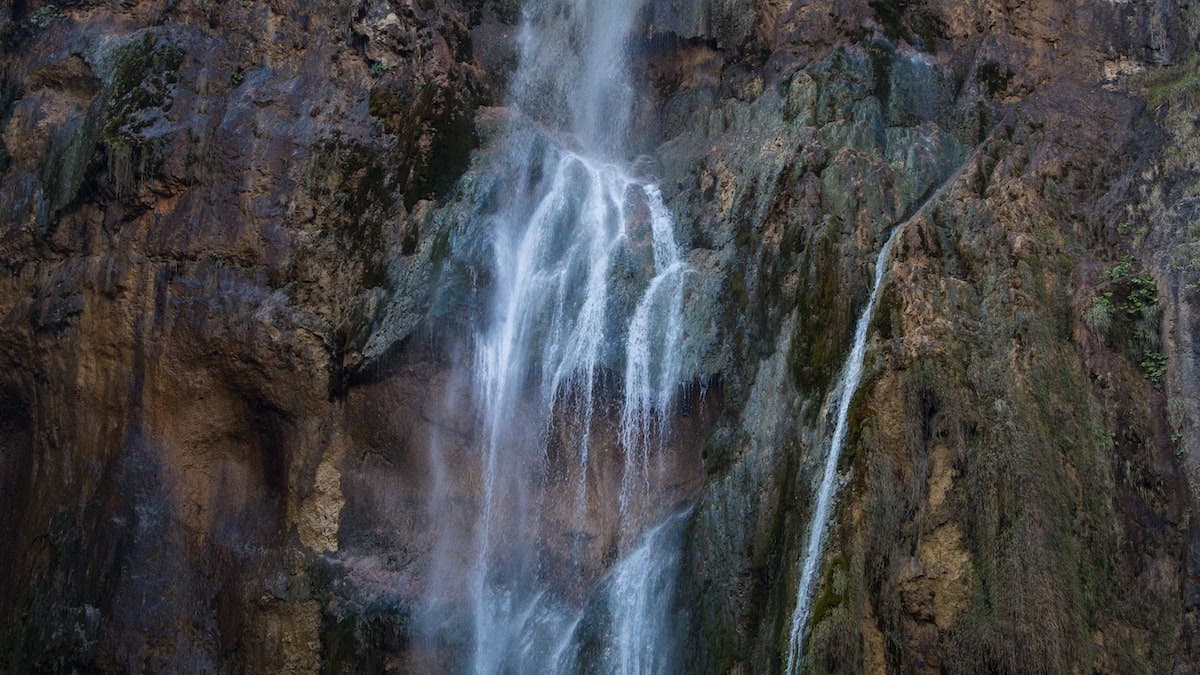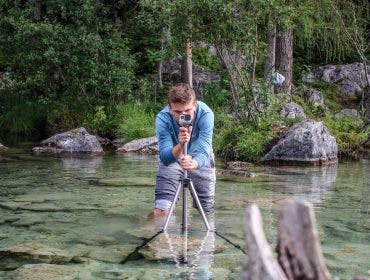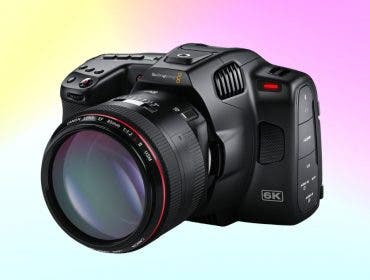If you use natural light for your photography, your photo gear should include a camera polarizer lens filter. Especially for photos that include the sky, the polarizer lens filter does wonders. This small accessory can transform a dull photo lacking contrast and color into a vivid, artful creation. Moreover, it reduces atmospheric haze and allows you to take beautiful pictures in the harshest sunlight.
And if you need one more reason to learn to use a camera polarizer lens filter, you should know that you can’t create the effect of a polarizer filter in post-processing. It’s one of those things you either get right in camera or don’t get at all.
What is a Camera Polarizer Lens Filter?
A camera polarizer lens filter (or polarizing filter) is a filter that blocks polarized light. In short, polarized light is light reflected from a nonmetallic surface, such as water, glass, vegetation, and asphalt. As a result, with a polarizer lens filter on the camera, your photos will be less affected by reflections and glares and will produce photos with higher contrast and more vivid colors. The polarizer filter also blocks the polarized component of the skylight, creating darker and more intense shades of blue without affecting the rest of the frame.

Polarizer filters are either linear or circular. They have the same blocking effect on polarized light but interact differently with the camera. Linear polarizer filters interfere with metering and autofocus systems of SLR cameras because those systems are polarization-dependent. Circular polarizer filters include an additional quarter-wave plate that transforms the linear polarized light into circularly polarized light, which doesn’t interfere with SLR systems.
However, all you have to do to use a camera polarizer lens filter, either linear or circular, is to mount it on the front of the lens and rotate it until it blocks the polarized light from your scene. Like any other filter, the polarizer filter needs to have the same diameter as your lens. Alternatively, you can use a filter holder.
Who Should Use a Camera Polarizer Lens Filter
Landscape photographers are probably the first to buy a polarizer filter. They shoot exclusively in natural light, and most photos include the sky. Furthermore, they don’t always afford to choose the best time of day for their photos and need to make the most of the harsh midday sun. The polarizer filter allows them to enhance the blue of the sky, create contrast, and increase color saturation. As a result, landscape photos become picturesque with well-defined clouds and serene blue skies.

Whether they photograph the sky or not, nature photographers often use a polarizer filter. They use it to eliminate reflections and glares produced by bodies of water (e.g., lakes, oceans), dew or raindrops on vegetation, shiny rocks, and other nonmetallic reflective surfaces. For example, the wet rocks surrounding a waterfall may create unpleasant reflections that distract from the main subject.

Besides getting rid of reflections and glares, nature photographers also use a polarizer filter to increase color saturation and contrast. It is particularly useful for photographing vegetation, such as flowers and fall foliage. Moreover, the polarizer filter removes the atmospheric haze and creates sharper and clearer photographs.
Street and architecture photographers also use a polarizer filter, and they have more than one reason to do it. First, their photos may include the sky, so they need to block polarized sky light and improve the sky’s contrast and color. Then, they often photograph reflective surfaces, such as windows and shiny buildings, and roads. For example, a polarizer filter allows you to take a clear photo through a glass window instead of capturing your own reflection. Last but not least, atmospheric haze may affect sharpness and clarity, especially for long exposures.

How to Choose a Polarizer Lens Filter
Although linear polarizer filters are good at their job, circular polarizer filters are often a better choice unless you have a specific need for a linear polarizer.
For circular polarizers, you need to decide on the filter’s diameter, and it depends on the lens you want to use it with. Check the lens specs to know what filter size you need. For example, Canon EF 24-70mm f/2.8L II USM Lens has a filter size of 82mm. The Nikon 200-500mm f/5.6E ED AF-S NIKKOR VR Lens has a filter size of 95mm.
Therefore, you will need different filters for lenses with different filter sizes. Nevertheless, even when you use lenses with the same filter size, it’s good to have a polarizer filter for each of the lenses you most often use. In addition, you can mount multiple filters at the same time (e.g., UV filter, polarizer filter, ND filter). Thus, the polarizer filter doesn’t have to come off when you need to use another filter.
If you already use a filter holder for your ND or other filters, the best polarizer filter for you is the one that fits the holder. For example, the NiSi 100x100mm True Color Square Polarizer is compatible with all filter holders that support filters of 100mm width and 2mm thickness.
Best Camera Polarizer Lens Filters
NiSi 82mm True Color Pro Nano Circular Polarizing Filter
Designed to reduce reflections and glares and improve the color vibrancy of the sky and foliage, Nisi True Color is a circular polarizing filter preferred by landscape photographers. It creates natural-looking colors and reduces haze, providing the same experience for the viewer as for the photographer. In addition, the proprietary NiSi Pro Nano Coating creates a waterproof and scratch-resistant layer that protects the lens from deterioration. The filter fits an 82mm filter-size lens.
NiSi Enhanced Landscape NC CPL Filter for 100mm V7 Holder
If you use the NiSi V7 Holder, you need a compatible polarizer filter, and one from the same brand is the best choice. NiSi Enhanced Landscape Polarising Filter CPL NC offers a quick install system, allowing you to focus on your photography. It reduces reflections and enhances saturation. But unlike other polarizer filters, it creates cooler tones. The filter’s Nano coating optical glass is weatherproof and easy to clean.
Tiffen 72mm Circular Polarizer Filter
Tiffen 72mm Circular Polarizer Filter is a standard circular polarizing filter for 72mm filter size lenses. It’s a general-purpose filter designed for any type of outdoor photography. You can rotate it while mounted to achieve the ideal effect.
Tiffen 72mm Digital HT Circular Polarizing Filter
Tiffen 72mm Digital HT filter benefits from Tiffen’s state-of-the-art technology for reliability and durability. With the help of the Hi-Trans Double-Sided Titanium Multi-Coating, the filter is scratch-resistant and can be cleaned without worries. It also features a low-profile titanium finish ring and an anti-reflective black lock. The filter reduces the amount of light entering the camera.
Benro Aureole Polarizer Lens Filter
The best features of the Benro Aureole polarizer filter are the ULCA Multi-Coating for reducing flares and chromatic aberration and the NANO WMC Coating that makes it scratch-resistant. The filter makes the colors more vibrant and produces sharp, clear photos. It is compatible with Benro Aureole Filter System.
B + W 67mm Master High Transmission Circular Polarizer MRC Nano Filter
The B+W polarizer filter is a circular polarizing filter that increases color saturation and contrast without darkening the image too much. The multiplying factor with the filter on is 2 to 3, the equivalent of 1 to 1.5 f-stops. The filter is designed for general-purpose outdoor photography and produces little vignetting. It fits a 67mm filter-size lens.
Frequently Asked Questions
Is a polarizer lens filter worth it?
It is definitely worth it. Polarizer filters improve the quality of your outdoor photographs and produce natural-looking colors. They enhance contrast and color saturation, eliminate atmospheric haze, and reduce reflections and glare.
Polarizer filters also protect the lens from scratches or weather and prolong its life. Furthermore, they aren’t expensive and work very well in combination with other filters, allowing you to leave them mounted on the lens all the time. Even if you use the polarizer filter less often, it mounts so easily and quickly that it won’t delay your photo setup.
Does a polarizer affect image quality?
A polarizer filter is designed to improve image quality by enhancing color saturation and contrast and reducing reflections and glares. So it does change the image, but for the better. However, polarizer filters reduce the amount of light that enters the camera with 1 to 3 f-stops. You need to adjust exposure accordingly to avoid producing underexposed images. In addition, some filters may create vignetting and visibly darken a part of the image (usually the sky).
Is a polarizer good for night photography?
It is not advised to use a CPL filter in low light or at night. A CPL filter reduces the light that hits the camera sensor, which means that you have to shoot with a higher ISO. You could, of course, keep your ISO levels and instead use the filter to slow down the exposure to make long exposures. However, I suggest that for this, you instead look at proper ND filters if you want to venture into long-exposure photography.
Conclusion
A polarizer filter is a small accessory that won’t break either the photo bag or the budget. It will sit quietly in a pocket until you need it. And, if you take any type of outdoor photograph, you will need it for sure. Although the polarizer filter can create some stunning effects, its main purpose is corrective. It helps you capture the colors and contrasts of the scene as you see them — without haze, reflections, or washed-out tones.






